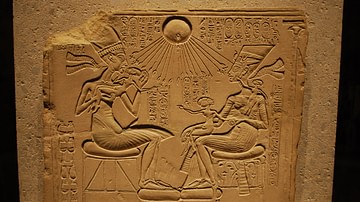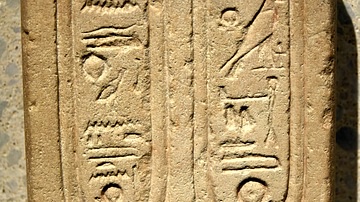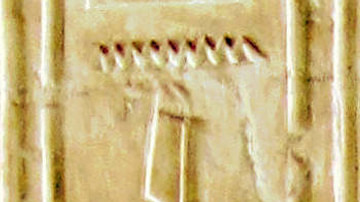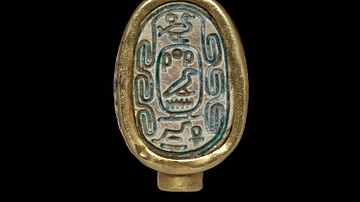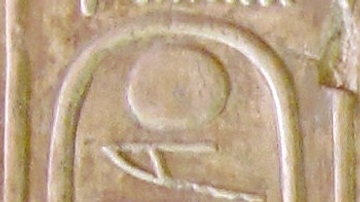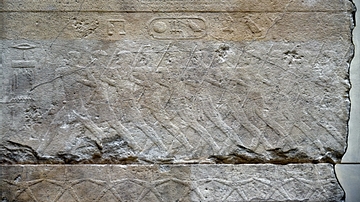Illustration
Early cartouche of the god Aten, calcite alabaster. New Kingdom of Egypt, 18th Dynasty, 1351-1334 BCE.
At the upper part of this votive plaque of the God Aten, there are two "early" cartouches of Aten. On the right, it reads "The living Re-Horakhty, Rejoicing in the horizon" while that on the left reads "In his name as Shu, who is in the Aten". Below them, a figure of Akhenaten (r. 1353-1336 BCE) is flanked by cartouches.
The one on the right, below Akhenaten's left hand is the nomen cartouche (birth name) of Akhenaten which reads "Beautiful are the Forms of Re, the Unique one of Re". The prenomen (throne name) lies below his right elbow and reads "Effective for the Aten". On the extreme right side, Nefertiti's cartouche can be seen and reads "Beautiful are the Beauties of Aten, the Beautiful one has come".
Neues Museum, Berlin.
About the Author
Cite This Work
APA Style
Amin, O. S. M. (2019, August 26). Early Cartouche of the God Aten. World History Encyclopedia. Retrieved from https://www.worldhistory.org/image/11112/early-cartouche-of-the-god-aten/
Chicago Style
Amin, Osama Shukir Muhammed. "Early Cartouche of the God Aten." World History Encyclopedia. Last modified August 26, 2019. https://www.worldhistory.org/image/11112/early-cartouche-of-the-god-aten/.
MLA Style
Amin, Osama Shukir Muhammed. "Early Cartouche of the God Aten." World History Encyclopedia. World History Encyclopedia, 26 Aug 2019, https://www.worldhistory.org/image/11112/early-cartouche-of-the-god-aten/. Web. 09 Jul 2025.



